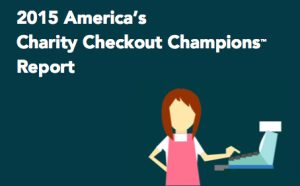It isn’t a donor pyramid. It’s a done funnel. According to Andrea Wasserman, president of Washington, D.C., development firm Social Profit Ventures, the trick is moving your base of annual donors down the funnel and convince them to make major and planned gifts.
Wasserman and former colleague Sarah Schonberg, director of development for BBYO in Washington, D.C., shared some strategies on how to advance annual donors during the Bridge to Integrated Marketing and Fundraising Conference in Oxon Hill, Md. “If you have a large group of supporters for your annual campaign, you should be able to drop some down to bigger gifts,” said Wasserman. “Gravity is on your side.”
The goal of a healthy program is to build a donor funnel that can support all fundraising efforts. Bring people in at the annual giving level, but don’t allow them to get stuck there. Identify and cultivate prospects for larger gifts. “Get the gift, repeat the gift, upgrade the gift,” said Wasserman.
When BBYO, a Jewish youth organization, took a hard look at its philanthropy program, it saw a problem: Almost three-quarters of the funding was from 11 major donors. The development office realized it needed to diversify and optimize its advancement while capitalizing on the organization’s 90th anniversary.
Its solution was to re-categorize gifts based on size. BBYO had classified gifts based on for which campaign the funds were raised. Now, about a year into the reworking of the development operations, gifts are classified as annual fund (gifts less than $1,800), mid-prospects, ($1,800 to $4,999) and major giving ($5,000+). Direct response had been focused mostly on acquisition. Now it’s geared more toward depth of relationship and gift renewals and upgrades. BBYO hired new staff for a major gift team as well.
“We maximized direct response by focusing on retention, gift level and integration,” said Schonberg. Another strategy BBYO implemented was step-up gifts: one track for gift levels between $180 and $499 and another for $500 to $1,799, and a giving club at $1,800-plus (the number 18 is important in Jewish culture because it represents the word “chaim,” which means life). “We sent a mailer to those giving $500 to $1,799, and several people stepped up,” said Schonberg.
The results of the new approach, while still being analyzed, have been strong, said Schonberg. “It has far exceeded our goal.” She said the annual fund grew 18 percent, and regional funding grew even more, about 22 percent or $75,000 over this point in 2012.
Wasserman outlined five mistakes many nonprofits make when they’re trying to funnel donors from annual giving to larger gifts. They are:
- Underestimating the role annual giving plays in a strong advancement program;
- Taking a one-channel approach to annual giving focused solely on direct mail solicitation;
- Over-budgeting acquisition mailings;
- Lack of a comprehensive approach to annual giving with little segmentation; and,
- Viewing money raised as the key metric and not considering the role of response rates: how sustainable is the bottom line?












